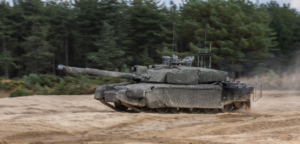Author: Samuel Ray -
‘The Defence Science Technology Laboratory (DSTL) is an executive agency of the Ministry of Defence providing science and technology for the UK’s defence and security. The Platform Systems Innovation Competition 2019: “Stopping it in its tracks” provides university students the exposure to opportunities available at DSTL, by finding solutions to real problems. Teams of up to 4 students must theorise a novel solution to stop or impede a moving tank’ (DSTL, 2019).
Whilst attending the Autumn careers fair I began talking to a DSTL employee who mentioned they were offering an interview workshop with free pizza. Obviously, the offer of free pizza was enough reason to attend, let alone knowledge of what my interviews will be like when I apply for my placement year. During the workshop, the innovation competition was introduced. Instantly interested in the challenge, I presented the task to my group of friends and the Tank Topplers was born. The tank to be stopped is the Challenger 2, a tank never destroyed in combat by anything other than one of its own (accidentally)…

As we started working towards our first deadline, a progress report outlining our initial ideas and our time management, the budget of 150 hours seemed a huge overestimate. In the first few meetings we had used the brain storming skills learnt in the first week of our degree, to quickly produced a few different ideas of impeding the tank. We decided the barrel was the place to attack as it could be used as a lever to damage itself. Thinking we were making good time; the project went on the backburner as we had our semester 1 exams.
With exams out the way we realised we only had a month left to turn our very rough concept into an idea that could be submitted. This development phase explained why we had been given the 150-hour time budget. We seemed to take one step forward and two steps back with all the deployment methods we were designing. Finally, we designed something that with some development could take on the tank. Our mechanism involved using pressure pad activated poles that would erect vertically at speed, bringing with them a cable that was anchored to the ground. This high-speed nature would prevent the tank evading the solution. With the barrel underneath the cable, the tank would knock over the poles causing the cable to fall onto the barrel. As the tank continues travelling forward, tension would build up in the cable and bend the barrel.


With the design finalised the last task was to write up the project and wait to hear if we had made the final. Pre Covid-19, the plan was for 5 finalists to present their ideas to a judging panel made of industry experts and serving Army personnel, unfortunately this had to be cancelled. So now all that was left for us to do was wait for the panel to decide.
When the all-important email arrived, the whole team was shocked after reading it. As a team of first years we were not expecting much success and were treating the project as valuable experience / CV booster, but the email revealed we had won! We have all been awarded prizes but more importantly, feedback that will be useful throughout our projects at university and hopefully beyond.
Tank Toppler members: Samuel Ray, Jimmy Gibson, Jasper Kettle, Paul Randall
Reference:
DSTL. M.o. Defence, 2019. DSTL Platform Systems Innovation Competition 2019.
Respond
